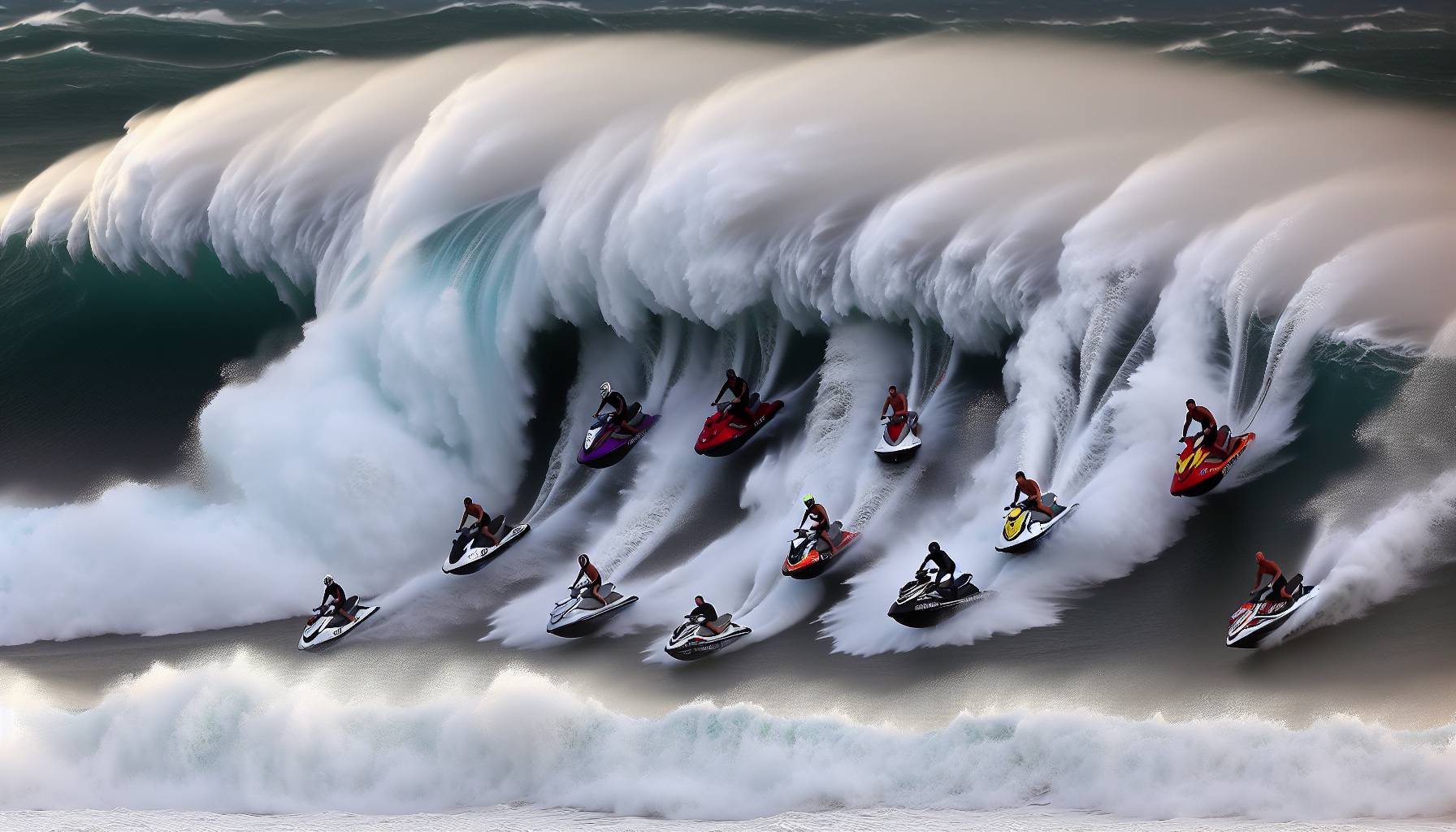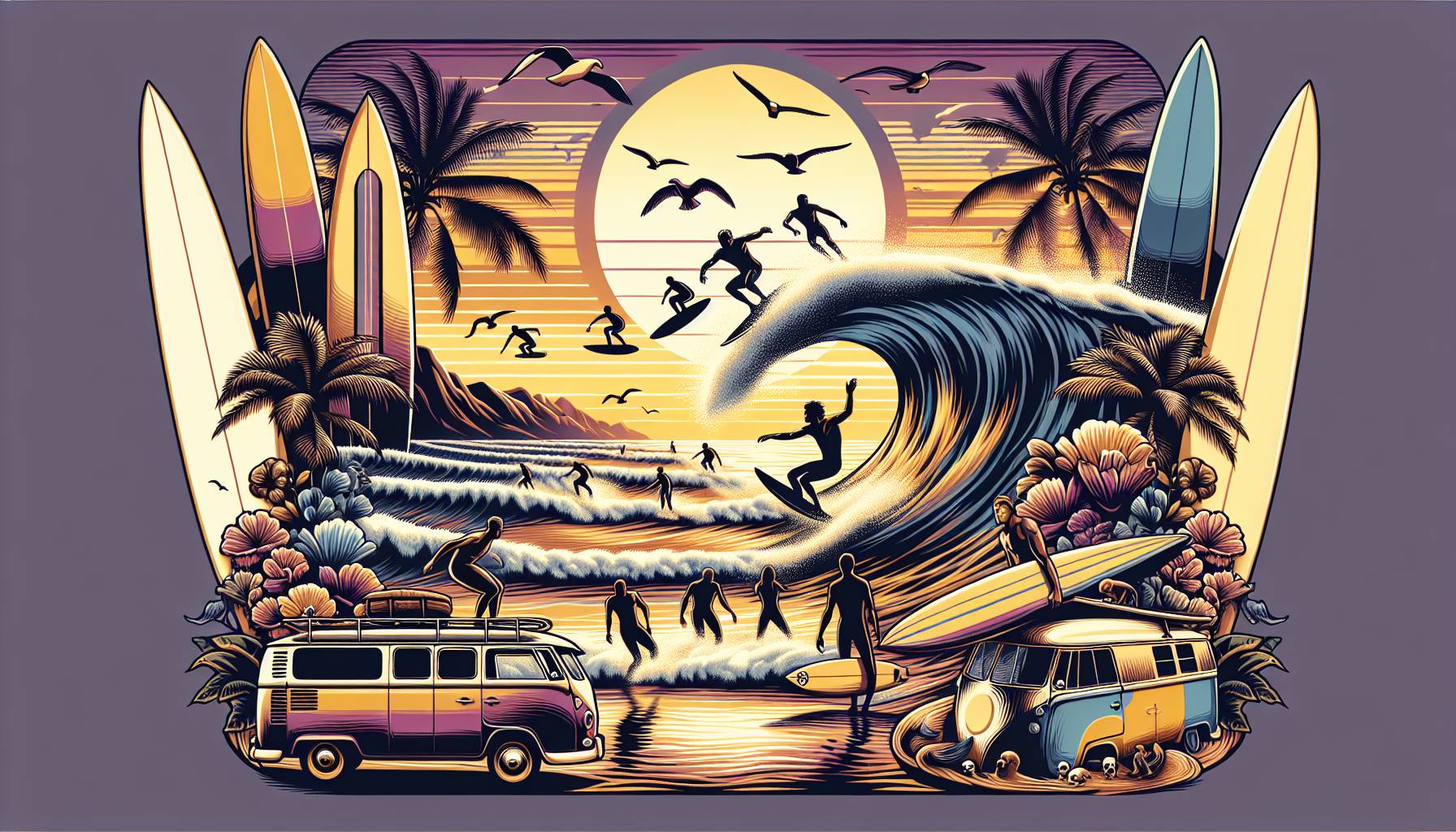
Promoting biodiversity through conservation efforts
Australia’s coastal ecosystems are home to a diverse range of marine and terrestrial species, many of which are under threat due to habitat destruction, pollution, and climate change. Conservation efforts play a crucial role in preserving these ecosystems, ensuring that future generations can continue to enjoy the natural beauty and biodiversity of the coastline.
One of the key strategies in promoting biodiversity is the restoration of native vegetation along coastal dunes and wetlands. These habitats provide essential shelter and breeding grounds for various species, including shorebirds, reptiles, and small mammals. By replanting native flora and removing invasive species, conservation initiatives help maintain the delicate balance of these ecosystems.
Marine conservation is equally important, particularly in areas popular with surfers. Coral reefs, seagrass beds, and mangroves serve as vital nurseries for marine life, supporting fish populations and protecting shorelines from erosion. Efforts such as marine protected areas, sustainable fishing regulations, and pollution reduction programs contribute to the health of these underwater environments.
“Healthy ecosystems mean healthier waves. Protecting marine biodiversity ensures that the ocean remains a thriving environment for both wildlife and surfers.”
Local conservation groups and surf communities are actively involved in initiatives such as beach clean-ups, wildlife monitoring, and habitat restoration projects. These grassroots efforts not only enhance biodiversity but also foster a deeper connection between individuals and the natural world.
By supporting conservation programs and adopting responsible environmental practices, surfers and coastal communities can play a significant role in preserving Australia’s unique biodiversity. Every effort, no matter how small, contributes to the protection of the landscapes and seascapes that make surfing such a special experience.
Encouraging community engagement with nature
Engaging with nature is not just about enjoying the outdoors—it’s about fostering a deeper appreciation for the environment and taking active steps to protect it. For surfers, the ocean is more than just a playground; it’s a living ecosystem that requires care and respect. Encouraging community involvement in environmental initiatives helps strengthen this connection while ensuring the long-term health of coastal habitats.
One of the most effective ways to inspire community engagement is through hands-on activities such as beach clean-ups. These events bring together surfers, local residents, and environmental groups to remove plastic waste and other pollutants from the shoreline. Not only do they help keep beaches pristine, but they also raise awareness about the impact of marine debris on wildlife and water quality.
Educational programs and workshops also play a crucial role in fostering a sense of responsibility towards nature. Schools, surf clubs, and community organisations often host events that teach participants about coastal ecology, sustainable surfing practices, and the importance of marine conservation. By equipping individuals with knowledge, these initiatives empower them to make informed choices that benefit the environment.
Another way to encourage engagement is through citizen science projects. These initiatives allow everyday people to contribute valuable data on marine life, water quality, and coastal erosion. Surfers, who spend countless hours in the ocean, are in a unique position to observe changes in the environment and report their findings. Programs such as water sampling, marine species monitoring, and dune restoration efforts provide opportunities for the community to take an active role in conservation.
“When people feel connected to nature, they are more likely to protect it. Surfing communities have a powerful voice in advocating for the health of our oceans and coastlines.”
Surf festivals and eco-friendly competitions are another way to bring people together in support of environmental causes. Events that promote sustainability, such as plastic-free surf contests and eco-conscious surfboard shaping workshops, highlight the importance of reducing our ecological footprint while celebrating the sport.
By participating in these initiatives, individuals not only contribute to the preservation of Australia’s coastal ecosystems but also build a stronger, more environmentally conscious surf community. The more people engage with nature, the greater the collective impact in ensuring that future generations can continue to enjoy the beauty and biodiversity of the ocean.
Sustainable practices for long-term impact
Ensuring the long-term health of Australia’s coastal ecosystems requires a commitment to sustainable practices that minimise environmental impact while supporting biodiversity. For surfers and coastal communities, adopting eco-friendly habits can help protect the very landscapes and seascapes that make the sport so special.
One of the most effective ways to reduce environmental harm is by choosing sustainable surf gear. Many traditional surfboards are made using materials that contribute to pollution and carbon emissions. Opting for boards crafted from recycled or eco-friendly materials, such as algae-based resins or sustainably sourced timber, can significantly lower the ecological footprint of surfing. Similarly, using wetsuits made from natural rubber alternatives, like Yulex, helps reduce reliance on petroleum-based neoprene.
Reducing plastic waste is another crucial step in sustainable ocean stewardship. Single-use plastics, such as wax wrappers, water bottles, and snack packaging, often end up in the ocean, harming marine life and polluting beaches. Surfers can make a difference by choosing plastic-free alternatives, carrying reusable water bottles, and supporting brands that prioritise sustainable packaging.
Eco-conscious travel is also an important consideration. Many surfers travel extensively in search of waves, but transportation—especially air travel—contributes to carbon emissions. Where possible, choosing local surf spots, carpooling, or using public transport can help reduce the environmental impact of surf-related travel. Additionally, supporting surf tourism initiatives that invest in conservation efforts ensures that local ecosystems benefit from visitor activity.
“Sustainability isn’t just about reducing harm—it’s about actively giving back to the environment. Every small change adds up to a healthier ocean and a better future for surfing.”
Another key aspect of sustainability is respecting marine life and coastal habitats. Avoiding surf spots with fragile coral reefs, steering clear of nesting areas for seabirds, and following responsible wildlife interaction guidelines all contribute to the protection of biodiversity. Additionally, using reef-safe sunscreen helps prevent harmful chemicals from damaging marine ecosystems.
Surf brands and businesses also play a role in promoting sustainability. Many companies are now embracing ethical production methods, using recycled materials, and supporting environmental initiatives. By choosing to support brands that prioritise sustainability, surfers can help drive positive change within the industry.
Ultimately, sustainable practices are about making conscious choices that benefit both the environment and future generations of surfers. By integrating eco-friendly habits into daily routines, individuals can contribute to the long-term preservation of Australia’s stunning coastlines and ensure that the waves remain clean, vibrant, and full of life.
Promoting biodiversity through conservation efforts
Alright, legends, let’s talk about keeping our backyard wild and thriving. This initiative isn’t just about planting a few trees and calling it a day—it’s about making sure our coastlines, reefs, and bushlands stay teeming with life. From restoring native habitats to protecting endangered species, every effort counts in keeping Australia’s natural playground in top shape.
One of the big moves? Boosting biodiversity by reintroducing native plants and wildlife. That means more fish in the water, more birds in the sky, and healthier ecosystems all around. And let’s be real—better biodiversity means better fishing, better waves, and a whole lot more adventure.
“Healthy ecosystems mean healthier oceans, and healthier oceans mean better surf and fishing. It’s a win-win, mate.”
Local conservation crews are working hard to tackle invasive species, clean up waterways, and protect fragile marine environments. Whether it’s keeping plastic out of the ocean or restoring mangroves that shelter fish nurseries, these efforts help keep our favourite spots pristine.
- Rewilding projects—bringing back native species to balance ecosystems.
- Marine conservation—protecting coral reefs and fish populations.
- Coastal restoration—keeping beaches and dunes healthy for future swells.
So next time you’re out chasing waves or casting a line, take a moment to appreciate the work going into keeping these places alive. After all, a thriving ocean means more epic sessions and bigger catches. Let’s keep it wild, yeah?
Encouraging personal connections with nature
Alright, crew, let’s talk about getting amongst it. This isn’t just about staring at nature from a distance—it’s about diving in, feeling the salt on your skin, and getting your hands dirty. Whether you’re paddling out at sunrise, trekking through the bush, or casting a line at your secret fishing spot, connecting with nature is what it’s all about.
Ever noticed how a solid surf session or a day out on the water clears the head? That’s nature working its magic. Studies reckon spending time outdoors boosts mental health, lowers stress, and even makes you a happier human. And let’s be honest—there’s nothing like the rush of dropping into a perfect wave or reeling in a big one to remind you why we love this land.
“The ocean doesn’t just give us waves and fish—it gives us a reset. Get out there and soak it up.”
Getting involved is easier than you think. Join a local beach clean-up, plant some native trees, or just take a mate out for a surf and show them why protecting these places matters. Every little bit helps, and the more we connect with nature, the more we’ll want to look after it.
- Surf and protect—respect the ocean, pick up rubbish, and keep the lineup clean.
- Fish responsibly—know your limits, respect the catch, and leave no trace.
- Explore more—hike, camp, and discover new spots to appreciate the wild.
So next time you’re out there, take a moment. Breathe it in. Feel the energy of the ocean, the bush, the open sky. This land is ours to enjoy, but it’s also ours to protect. Let’s keep the adventure alive.

